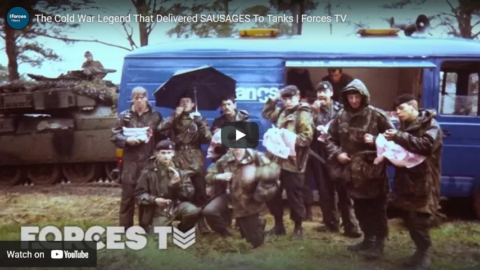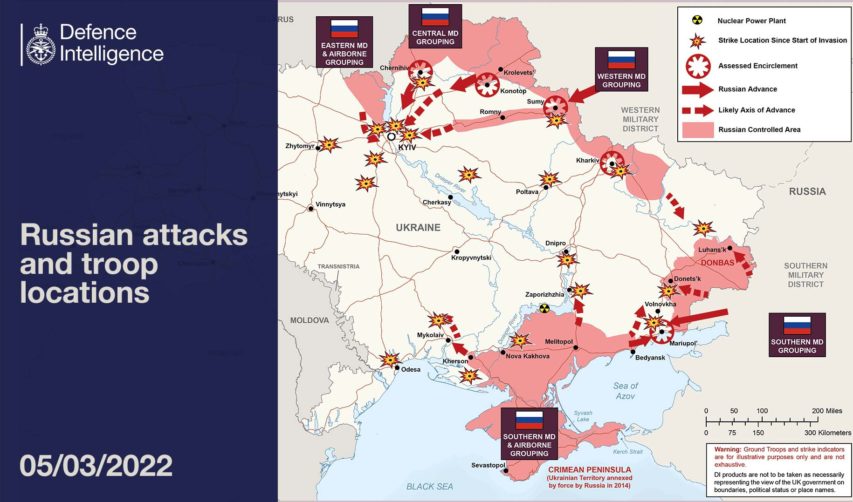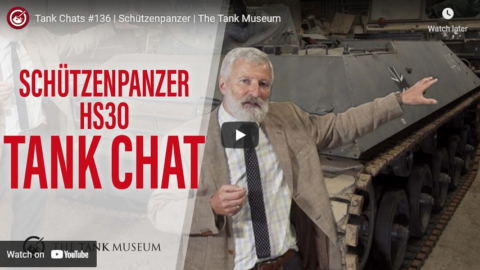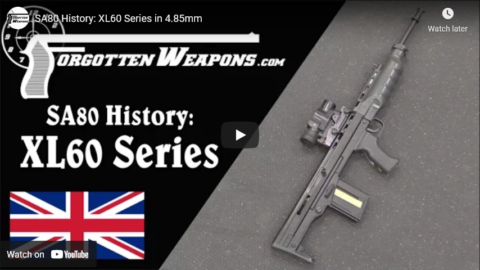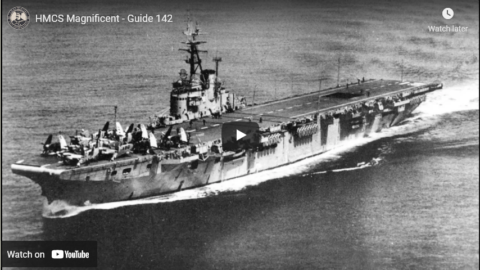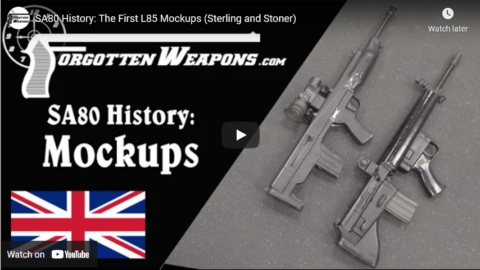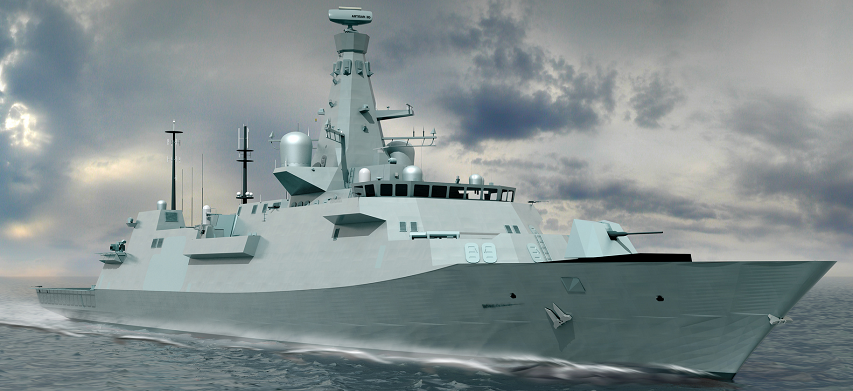Forces News
Published 26 Apr 2018To British troops based in north Germany in the last two decades of the Cold War, he was a legend. But this was no commando or member of the special forces.
Check out our website: http://forces.net
Twitter: https://twitter.com/ForcesNews
May 20, 2022
The Cold War Legend That Delivered SAUSAGES To Tanks | Forces TV
April 20, 2022
The Unbreakable ROCKEX: Canada’s answer to the Enigma machine
Polyus Studios
Published 30 Dec 2021Well before digital encryption and VPNs there was Rockex, Canada’s unbreakable cipher machine that rivaled the German Enigma in its day. Although completely hidden from the public, Canada has played a noticeable role in the history of espionage. During the Cold War Canadian cipher machines worked alongside those of her allies to keep communications secure and helped to preserve the peace.
Check out cryptomuseum.com for more information about Rockex and to find the source of most of the pictures of the device I used.
March 18, 2022
Jean Charest tries to position himself as the pro-military Conservative leadership candidate
Canadian politicians — generally speaking — are unwilling to tread too far into discussions of the Canadian Armed Forces and the utter disaster that is our federal government’s procurement “process”. There are lots of good, electoral reasons for this: Canadians have been propagandized over the last two generations to see Canada as a country with no real enemies and having no need of military force except for overseas peacekeeping and disaster relief. Any identified need for new equipment or even just updated replacements for existing capabilities is always a politically dangerous discussion, as it’s remarkably easy to get public support for almost any non-military spending instead of anything even vaguely warlike. Worse, on those few occasions when the government of the day bites the bullet to buy new ships/tanks/planes/helicopters/etc., the top priority isn’t military effectiveness or even lowest-price but where the money will be spent. Bidders for Canadian military contracts can’t just crank off a few extra units of the weapon or vehicle on existing production lines (which in almost every case would be both militarily better and economically cheaper): the government almost always demands new, expensive production facilities be constructed in Canada or for the foreign supplier to “partner” with an existing Canadian company to produce as much in Canada as possible.
This procurement charade usually means the Canadian Forces end up with far fewer weapons or vehicles because the increased costs of partial or complete production in Canada gobble up far more of the allocated budget. For example, back in 2017, we purchased a batch of new machineguns. It was the same model already in use with the Canadian army and with many of our NATO allies. If we’d just bought from one of the foreign manufacturers who already had production lines and tooling set up, each gun would have cost between US$6,000 and US$9,000 depending on configuration. But because we insisted on having Colt Canada set up a new production line, each weapon ended up costing C$28,000!
Multiply this across the entire range of equipment needed by the Canadian Army, the Royal Canadian Navy, and the Royal Canadian Air Force, and it’s quickly obvious that we’re running one of the least efficient military procurement systems in human history. And even on a domestic spin-off/job creation/vote buying spectrum, it’s insanely expensive and wasteful.
All of that out of the way, here’s Conservative leadership hopeful Jean Charest deliberately touching one of the “third rails” of Canadian politics by proposing an increase in funding for the military:
Our military procurement system is broken. For years experts have been warning about our incompetence at making major defence purchases. The past few weeks have shown us the price of our inaction.
While our allies, the United States, the United Kingdom and Australia, have entered into a new security pact to counter China in the Pacific, Canada wasn’t even invited to the table.
Germany, Sweden, and other NATO allies promise to increase their military spending to prepare for the uncertain times ahead. Canada has a moral responsibility to act. Now is the time.
If elected as the leader, my Conservative government will make significant changes and upgrades to our nation’s military capabilities. I will move quickly to ramp up Canadian defence spending to two percent of GDP, increase personnel to 100,000 and equip our forces for the challenging times ahead. I will modernize our cyber security infrastructure to prepare for future risks. And I will fix our embarrassing procurement system to ensure we get the equipment we desperately need.
The current conflict has also driven home the need to assert our sovereignty, especially in our North. As major sea lanes, essential to global trade and export of our natural resources, open within our arctic territory, we must be on high alert to Russian and Chinese encroachment. Neither recognizes our sovereignty there. In fact, no one really recognizes our sovereignty there and the imbalance in our military investments compared to our allies explains why that’s the case.
The war in Ukraine is a cruel reminder of why we cannot ignore these threats. Russia has a modern military base in the arctic — another area where indecision and delay could be extremely costly unless addressed.
A proud Canada must assert its sovereignty in the North and generate military support through major investments in equipment and coordination with our NATO allies. We need to get our act together.
The threats remain real and demand immediate attention from leaders willing to act in the best interests of their respective nations.
Canadians need experience and expertise overseeing our military. We need a government that supports our military.
March 6, 2022
March 4, 2022
Germany is finally being forced to adapt to 21st century realities
In The Line, Matt Gurney outlines German history since the end of WW2 and why German governments have allowed the Bundeswehr to shrivel to almost Canadian Armed Forces status and why they have also been eager to scrap local power options in favour of imported Russian oil and gas:
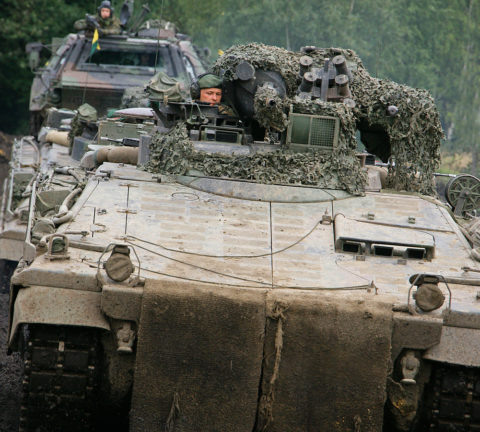
A Bundeswehr Marder 1A3 Infantry Fighting Vehicle during an exercise at the Munster Training Centre, 1 September, 2010.
Photo by Bundeswehr-Fotos via Wikimedia Commons.
After 1990, the newly combined German military largely evaporated. Manpower levels plummeted; huge quantities of equipment were mothballed or sold off. German military spending fell well below that of other large European NATO allies. Indeed, despite their military history and economic clout, Germany, on a per capita basis, is more a Canada to NATO than a France or Britain.
And not by accident. Germany’s partial demilitarization was driven by a series of considerations, all of which reflected deliberate choices. Germany is still haunted by its Nazi-era history, and even its peacekeeping contribution to Afghanistan was controversial, marking the country’s first major foreign mission since 1945. A smaller, little-used military is a balm to the nation’s wounded psyche. Further, a small German military, and a Germany broadly and overtly uninterested in military affairs, did much to ease concerns of wary allies with living memories of life under the Luftwaffe and Wehrmacht.
And, well, yeah: the Germans also cut their force levels like crazy because, as noted in my recent column here, it saved them a ton of money.
It’s important to understand, though, that it’s not just about the German military, though that’s perhaps the most stark symbol. The country has emerged as a leading force for European unity and liberal-democratic values. Not for nothing was recently retired chancellor Angela Merkel touted as a leader of the free world during the rocky Trump presidency in Washington. Under Merkel, the country tried to live the ideal of the modern Europe, including by letting in a million refugees fleeing fighting in the Middle East, a decision that has opened up political fissures in Germany that remain a problem today.
Much has also been made of the country’s decision to shut down its nuclear plants and rely instead on imports of Russian natural gas for energy. Dismissed by many as foolhardy — and it was foolhardy — it’s also not hard to read a whiff of almost pathetic desperation into the move. If we are just nice enough, if we buy enough Russian gas, if we perfectly model the new amiable European ideal, maybe, just maybe, could Germany cast off some of its historical taint?
If that was the plan, it hasn’t worked, and gosh, it hasn’t worked with a vengeance. Since the Cold War ended — paused? changed? — the Germans have remained minimally armed and resolutely affable and committed to European unity. The country did increase military spending after Putin’s 2014 annexation of Crimea, but it almost had to — the German military had fallen into a state of neglect and non-functionality that any Canadian would find instantly recognizable. Hundreds of billions of Euros were budgeted, and tens of thousands of new enlistments authorized, in the first expansion of German military power since reunification. Even while embarking on this effort, though, Germany continued to shut down its nuclear plants and increase its use of Russian energy imports.
That’s over. Deader than East Germany, as much as a relic as the bits of the Berlin Wall that tourists now collect (I have a fragment myself somewhere in a file in my office, though damned if I could find it when I went searching today while procrastinating on this column). On top of the many billions of Euros already pledged to military modernization, Chancellor Olaf Scholz has committed a supplemental fund of a further €100 billion for immediate shoring up of military capabilities, and has also committed to substantially raise Germany’s baseline defence spending to the two per cent NATO target — an effectively permanent annual boost of roughly a third over the already higher level achieved since 2015.
February 4, 2022
Canada’s delusionary approach to the question of providing military support to Ukraine
In The Line, “Tommy Conway” explains why it makes no sense to take Canadian government and military leaders’ talking points on the situation in Ukraine seriously:
Canada has not done these things. We say we’re not sending weapons because “diplomacy is the solution”, but the reality is we can’t send anything meaningful. Any small arms we send would likely be on a NATO standard, and thus not very useful for Ukrainian forces who use Soviet calibers. As for the stuff the Kyiv really needs — the anti-tank and anti-air systems that the Americans, British, and Balts are sending — we are not sending them because we barely have any. Our anti-tank capability is mostly theoretical. Because we have not replaced older, worn-out systems, we have less anti-tank capability now than we did during the “decade of darkness” in the 1990s. We’ve known for decades that we need to equip the infantry with highly-portable, effective guided missiles like the U.S. Javelin, but we haven’t bothered, save for a few Spike missile systems for our special forces. Maybe our regular ground forces will get something similar by 2033. We have literally no air defence capability besides shooting machine guns in the air and hoping for the best, so we have no air defence missiles to send. Besides the fact that we can’t support Ukraine with weapons, we can’t really support NATO allies with reinforcements either because our units, on a modern battlefield, would lack the ability to defend themselves. We might be welcome as a political gesture, but we might also just be in the way.
Our deficiencies go deeper than weapons. CAF is well below strength. But instead of doubling down on core capabilities, CAF leadership insists on putting more people and resources into newer, faddish capabilities like cyber and information warfare, when we already have an entire government agency that does cyber. Our brigades — the core of the Canadian Army’s fighting power, are under-strength, and the army’s recent “Force 2025” concept concedes that the army should hope to field small, combat team elements as the core of any near-future operational deployment. To put this in perspective, a combat team makes up part of a battlegroup, which makes up part of a brigade. The Russians have 50 battlegroup equivalents on the Ukrainian border, and roughly 16 in the Kaliningrad exclave bordering Poland and Lithuania.
A Canadian deployment of a few combat teams would be too small a force even to help manage a large number of refugees in an active combat zone. We might be able to scrape together a battlegroup, but it would be vulnerable to air and tanks — in other words, not very useful. Once it was destroyed, that would probably be the majority of the Canadian Army’s combat power gone, with no hope of reconstituting it.
It would be one thing if the army sold this reorganization as a necessary evil in lean times, but this sort of hollowing-out is instead presented as allowing the army to “remain[…] ready to operate not only in the land domain, but pan-domain in a joint environment beyond simply reinforcing its existing capabilities.” Strip away the jargon, and it should be obvious that this phrasing is the victim of too much powerpoint and too little thinking. Junior NCOs and junior officers alike are instructed to build a “priority of work” into their plans for even small, simple operations. Given that we don’t have realistic “current capabilities”, reinforcing our shell of an army should obviously be on the top of the list before we commit resources to new things. At the very least we should be open and honest about what we can and can’t do.
If you ask most talking heads in the Canadian “defence space”, battlegroups that can’t battle aren’t a big deal. The idea that modern war will be won on social media or through “integration” and digital technologies, thus making the old ground-pounders outdated, is a common staple among civilian defence academics. It’s also present in the government’s defence policy, which goes on at length about space and cyberwar and climate change and “ungoverned spaces”, but little about building a realistic fighting force. This hopeful language about an army that can operate in a chaotic world without much messy stuff like hurting people or breaking things is obviously nonsense, but novelty and wishful thinking are pretty standard fare for academics and politicians. It’s much more concerning to see supposedly practical military people hold reality in such low regard.
The officer class’ shoddy thinking comes from decades of misguided pseudo-intellectual development. After the Somalia Affair in the 1990s, the CAF turned to liberal arts education as a way to buy credibility. There was nothing wrong with the idea of intellectual broadening in theory — the officer corps obviously needed reform. But the reforms were rushed and packaged, so they replaced one set of intellectual deficiencies with another.
December 21, 2021
Tank Chat #136 | Schützenpanzer | The Tank Museum
The Tank Museum
Published 3 Sep 2021David Willey is back with another Tank Chat! This week’s episode is all about the Schützenpanzer. A West German infantry fighting vehicle developed from 1956 to 1958.
Support the work of The Tank Museum on Patreon: ► https://www.patreon.com/tankmuseum
Visit The Tank Museum SHOP & become a Friend: ► tankmuseumshop.orgTwitter: ► https://twitter.com/TankMuseum
Instagram: ► https://www.instagram.com/tankmuseum/
#tankmuseum #tanks
November 26, 2021
Look at Life — Air Umbrella (1961)
PauliosVids
Published 20 Nov 2018A look at NATO’s international squadrons, with footage of the F104 Starfighter.
November 21, 2021
SA80 History: XL60 Series in 4.85mm
Forgotten Weapons
Published 10 May 2017Armament Research Services (ARES) is a specialist technical intelligence consultancy, offering expertise and analysis to a range of government and non-government entities in the arms and munitions field. For detailed photos of the guns in this video, don’t miss the ARES companion blog post:
http://armamentresearch.com/british-e…
Once the basic configuration of the new British rifle was determined, the next step was to build a series of prototypes. The design that took form was basically a bullpup copy of the Armalite AR-18. The design team at Enfield were mostly senior draftsmen, with virtually no firearms experience among them. To make things worse, most of the design team was regularly rotated onto other projects, preventing them from developing any project experience on the rifle.
Several prototype batches were made (typically of a dozen guns each, both IWs and LSWs), all in the unique British 4.85x49mm cartridge, with a variety of different feature sets. Through the different patterns, configurations would change on the safety (push button vs lever) fire selector (push button vs lever), and magazine catch (straight-in side lever vs rock-in side lever vs rock-in rear paddle). At this time, plans still existed to make both left- and right-handed versions of the final gun, so prototypes of both were manufactured.
Because cost-cutting measures had not yet been forced on the project, these XL-60 series guns were generally reliable, at least in normal conditions. They are quite comfortable to fire, with a cartridge very similar to the 5.56mm NATO in practical terms. There is nothing particularly wrong with that cartridge, but it would be dropped when it lost NATO trials to the Belgian SS109 … but we will address that in the next episode of the SA80 history.
http://www.patreon.com/ForgottenWeapons
Cool Forgotten Weapons merch! http://shop.bbtv.com/collections/forg…
If you enjoy Forgotten Weapons, check out its sister channel, InRangeTV! http://www.youtube.com/InRangeTVShow
October 25, 2021
P90: FN’s Bullpup PDW
Forgotten Weapons
Published 2 Jul 2021http://www.patreon.com/ForgottenWeapons
https://www.floatplane.com/channel/Fo…
Cool Forgotten Weapons merch! http://shop.forgottenweapons.com
FN began developing the P90 in the late 1980s, actually preceding the NATO requirement that it would eventually compete for. The idea of the P90 was to develop a weapon for secondary troops to replace 9mm pistols and SMGs. There was an anticipated threat of Russian paratroops wearing armor that could defeat 9mm ball. The P90 was intended to be a light and handy weapon that was easily controllable without a tremendous about of training, and could defeat that sort of body armor.
The result was the 5.7x28mm cartridge, firing a 31 grain armor-piercing bullet at 2350 fps. This was combined with a simple blowback action and a Hall-style 50-round magazine in a fully ambidextrous, bullpup layout. The gun was introduced onto the market in 1990, and has been widely purchased by security and special operations organizations. In its original intended role for support troops, it has only been adopted by Belgium.
Contact:
Forgotten Weapons
6281 N. Oracle 36270
Tucson, AZ 85740
August 13, 2021
[Military 101] NATO Unit Counters – Niehorster Dialect
Military History Visualized
Published 26 Jul 2016» HOW YOU CAN SUPPORT MILITARY HISTORY VISUALIZED «
(A) You can support my channel on Patreon: https://www.patreon.com/join/mhv(B) You can also buy “Spoils of War” (merchandise) in the online shop: https://www.redbubble.com/people/mhvi…
» SOCIAL MEDIA LINKS «
twitter: https://twitter.com/MilHiVisualized
tumblr: http://militaryhistoryvisualized.tumb…Script & Further Information: http://militaryhistoryvisualized.com/…
—Sources—
–Websites & Links–Niehorster – Military Organization Symbols Key
http://niehorster.org/000_admin/009_s…https://en.wikipedia.org/wiki/NATO_Jo…
—Credits & Special Thanks—
The Counter-Design is heavily inspired by Black ICE Mod for the game Hearts of Iron 3 by Paradox Interactive
https://forum.paradoxplaza.com/forum/…—Song—-
Ethan Meixsell – “Demilitarized Zone” (the Irony :D)
August 7, 2021
HMCS Magnificent – Guide 142
Drachinifel
Published 14 Sep 2019The first ship of “Canada Month”, HMCS Magnificent, is the subject of today:
Want to support the channel? – https://www.patreon.com/Drachinifel
Want a shirt/mug/hoodie – https://shop.spreadshirt.com/drachini…
Want a medal? – https://www.etsy.com/uk/shop/Drachinifel
Want to talk about ships? https://discord.gg/TYu88mt
Want to get some books? www.amazon.co.uk/shop/drachinifel
Drydock Episodes in podcast format – https://soundcloud.com/user-21912004
August 6, 2021
Avro Canada CF-100 Canuck: Canada’s only domestically produced all-weather interceptor
Polyus Studios
Published 3 Oct 2017Support me on Patreon – https://www.patreon.com/polyusstudios
**I realize a few of you are having trouble with the way I talk and how I’ve done the sound mixing. Please note that this was my first video and I tried to get everything right as I learned to do it. That said, I obviously made some mistakes. I am just one guy making these things and I’m learning as I go. Feel free to check out my more recent videos where I have tried to correct the sound issues.**
The CF-100 is Canada’s only domestically designed jet fighter to reach service and to be built directly to RCAF specifications. In its day it was a competitive all-weather interceptor. The Canuck protected Canadian airspace from the threat of nuclear armed Soviet bombers for over a decade. This is the story of its development and deployment.
Aircraft mentioned:
Vampire F.3
CL-13 Sabre
CF-100 Canuck
CF-101 Voodoo
CF-105 ArrowResearch sources:
http://www.cmp-cpm.forces.gc.ca/dhh-d…
https://www.bombercommandmuseum.ca/aircraft/cf-100/
http://www.canadianflight.org/content/avro-canada-cf-100-canuck
http://www.avroland.ca/al-cf100.html
http://www.aviastar.org/air/canada/canada_canuck.php
http://www.rwrwalker.ca/caf_canucks.html
http://image-bank.techno-science.ca/d…
NORAD and the Soviet Nuclear Threat: Canada’s Secret Electronic Air War By Gordon A.A. Wilson0:00 Introduction
1:08 Initial Development
2:38 CF-100 Mk 1 and Mk 2
4:26 CF-100 Mk 3
6:51 CF-103 and Transonic Speeds
7:36 CF-100 Mk 4
11:33 CF-100 Mk 5
13:14 Velvet Glove and Future Proposals
14:28 Operational History
20:02 Conclusion#CF100 #CanadianAerospace #PolyusStudios
March 27, 2021
SA80 History: The First L85 Mockups (Sterling and Stoner)
Forgotten Weapons
Published 5 May 2017Armament Research Services (ARES) is a specialist technical intelligence consultancy, offering expertise and analysis to a range of government and non-government entities in the arms and munitions field. For detailed photos of the guns in this video, don’t miss the ARES companion blog post:
http://armamentresearch.com/british-e…
The British military had been working towards a reduced-power cartridge since the end of World War 2, and the ultimate adoption of the FAL/SLR in 7.62x51mm NATO did not end their interest in the concept. It would not be long before the roots of SA80 would take hold, and today we are looking at the very first mockups of the concept that would become the L85A1 and L86A1.
As part of a preliminary study to decide the basic layout and capabilities of a future new individual weapon and light support weapon, five wooden and metal mockups were produced in conventional and bullpup layouts, and also with/without “dropped” stocks to facilitate sighting. The favored mockup was the bullpup seen here, which gave rise to the whole Enfield Weapon System/SA80 family. It is relevant to note that the concept included a universal standard optical sight from the very outset, as this was a cutting edge concept at the time. In addition, note the small features like safety, sling swivels, and magazine catch, as these would vary back and forth through the development program.
After the wooden guns, two functional (or mostly functional) guns were produced. These were standard off-the-shelf rifles converted into bullpup configuration – one Stoner 63 and one Sterling AR18. Neither company was contacted for licensing or technical assistance.
http://www.patreon.com/ForgottenWeapons
Cool Forgotten Weapons merch! http://shop.bbtv.com/collections/forg…
If you enjoy Forgotten Weapons, check out its sister channel, InRangeTV! http://www.youtube.com/InRangeTVShow
March 17, 2021
Rebuilding the Royal Canadian Navy
I somehow missed this article by Sir Humphrey when he posted it a few weeks back. He’s looking at the Australian and Canadian governments’ respective decisions to use the British Type 26 design to replace their current anti-submarine fleets and considering some of the economic and military concerns that led to the decision.
In both cases there have been media articles in the last week over the programmes and concerns. In Canada, the challenge has been that the cost has grown to a total of $77bn for 15 escorts. There has been cost growth from an originally scheduled $14bn many years ago, and the first of class will not now be delivered until 2031. This has led to suggestions in some media quarters that Canada could do things faster and more cheaply if it simply bought an off the shelf foreign design now and got on with things.
An artist’s rendition of BAE’s Type 26 Global Combat Ship, which was selected as the Canadian Surface Combatant design in 2019, the most recent “largest single expenditure in Canadian government history” (as all major weapon systems purchases tend to be).
(BAE Systems, via Flickr)[…]
The issue now is that Canada will need to establish, almost from scratch, a frigate construction programme and workforce for a finite period of time without a clear plan of what follows on when the last hull is completed. At the same time it will need to run on ships that are becoming increasingly elderly – it is likely that most of the Halifax class will see more than 40 years of service, and some may approach their 50th birthdays before being replaced – something that will pose an increasing maintenance and resource challenge.
Could things be done more cheaply or quickly? Almost certainly yes, but only if you are willing to make massive compromises. It could be possible, for example, to look to licence build an existing design that is already in service. There are plenty of designs out there that could be licence built and brought into service in the next few years — probably at less cost than the T26 programme.
But while this may sound easy, its also a recipe for disaster. It’s easy to look at country X and say “they’re buying this ship for that much” and assume that Canada is getting a bad deal. But Country X is likely to have a very different set of requirements, and their design will reflect it.
For example, Canada needs a ship able to operate with NATO and 5 EYES as a fully integrated player – this adds cost to fit specific systems and equipment that is compatible. Canada will also want to fit bespoke systems to meet national needs – again this will require design changes, that come at a price. Bolting on all manner of different requirements that Canada needs to meet the unique operational circumstances adds price and complexity to the design.
While you probably could take an off the shelf design and build it now, it would be just that, an off the shelf design. It wouldn’t be optimised for local needs, and it wouldn’t have the right equipment, comms, meet local design standards, or be certified for use with national equipment.
You are then faced with two choices – either bring a cheap ship into service that is entirely unsuitable and not designed for your needs, but is a lot cheaper, or spend an enormous amount of money shifting the design to better reflect your needs. If you choose the latter, then suddenly you are adding cost and time in, and the 2031 date will slip even further.
If you choose the former, then you have to accept that the design is “as it comes” and will have minimal Canadian input – so limited industrial offsets, very little economic benefit, and the long-term support solutions will firmly be tied into the country of origin and not Canada. In other words, Canadian taxpayer dollars will be spent to support a foreign economy.
That last point is really the key. Canadian governments, in my lifetime at least, never look at the military requirement as the top priority and sometimes not even the second or third priority. The economic spin-offs, especially in those cases where the benefits can be allocated to marginal parliamentary constituencies, will be the top priority. As is always a talking point in the case of any major military hardware acquisition, this is going to be the “single largest expenditure in Canadian government history”. Just as the replacement of the RCAF’s aged CF-18 fighters will be the largest expenditure in its turn.

